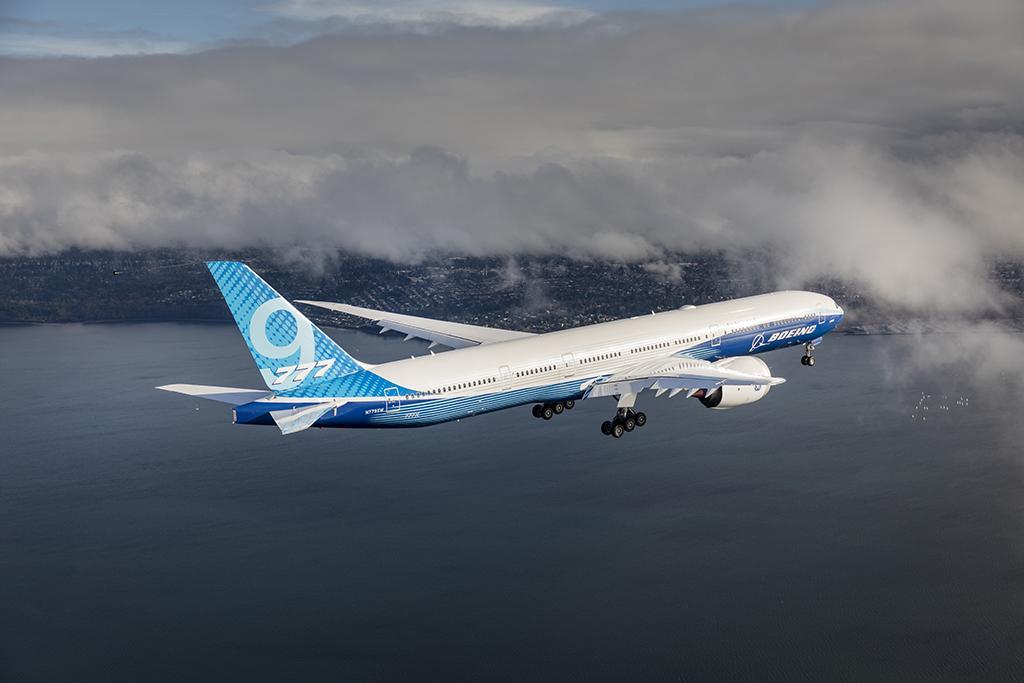
Despite Boeing’s recent decision to push back the commercial debut of the 777X from next year to 2022, the 777-9 test program continues to ramp up with the third development aircraft completing its first flight on Aug. 3.
Designated WH003, the aircraft departed Boeing’s Everett facility and flew a circuit encompassing parts of northern Oregon and central Washington before returning to land at the company’s flight test base Boeing Field, Seattle. The flight, which lasted around 2 hr. 50 min., reached a maximum altitude of 28,000 ft., top speed of around 530 kt., and included two missed approaches and circuits of Moses Lake.
The third aircraft will be used primarily to evaluate flight loads and performance of the auxiliary power unit, avionics and General Electric GE9X engines. It joins Boeing’s first two 777-9 development aircraft, which continue to amass test hours since the flight of the first aircraft on Jan 25 and the second on April 30. The first aircraft—which resumed flight tests on April 23 after an almost month-long hold-up related to the COVID-19 pandemic—is currently engaged in flutter tests and last week conducted stalls as part of continuing envelope expansion work.
While WH001 is primarily aimed at stability and control as well as high and low-speed aerodynamics, it has also been used for avionics, flight control systems and brake tests. The second aircraft—the entry of which into the program was also delayed by virus-related precautions—is mainly targeted at autoland system work as well as ground effects testing. WH002, which conducted autoland approaches at Moses Lake on Aug 3., will also be used to augment the stability and control work being undertaken by WH001.
A fourth aircraft, WH004, is also set to join the test program later in 2020. Incorporating a production representative internal cabin configuration, the last dedicated 777-9 test airframe will be used mainly to evaluate the environmental control system. Later in the certification effort in 2021, WH004 will also conduct airport noise compliance work and ultimately finish its test role with a phase of extended twin-engine operations (ETOPS) and airline-like functionality and reliability operations testing.
Despite what appears to be continuing progress with flight tests, Boeing said 777-9 development has slowed because of the COVID-19-related negative impact on market demand for the big new twin, as well as an extended certification process. This will reflect lessons learned from the revised certification of the 737 MAX, Boeing CEO Dave Calhoun said.
Commenting during the company’s recent earnings call on July 30, Calhoun said “we’ve tried to incorporate, or embed, as much of what we’ve learned in the 737 recertification as we can into that of the 777X, which means it just elongates that [process] a bit. Certain things are going to take more time to work our way through with the FAA. They’re going to go deeper than maybe they would have, or we would have assumed in earlier certification processes.”





